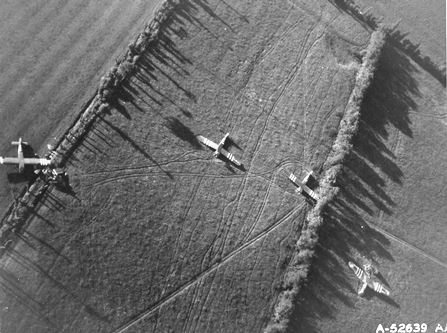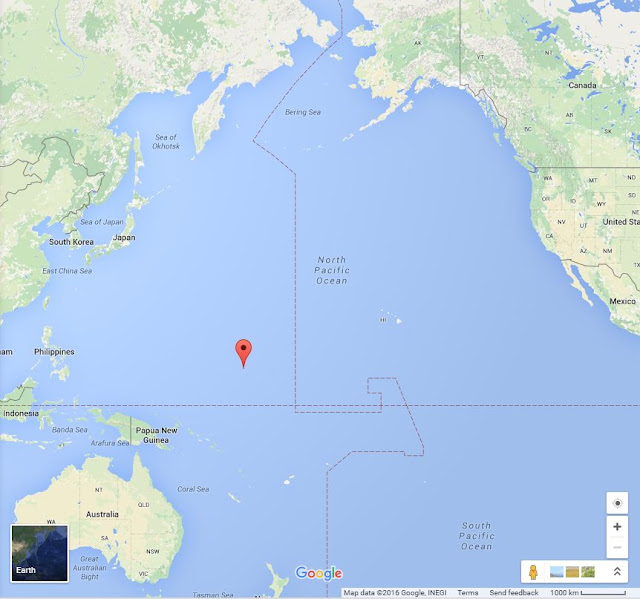"Flying coffins." "Tow targets." Pilots and glider-borne infantry had colorful and well-earned nicknames for their ungainly planes. But according to at least one veteran flight officer, the most common moniker for the combat glider was way off base: "Silent Wings."
Without a doubt, the Normandy invasion was the most important operation in WW2. After invasions in the "soft under belly" of the German Fortress Europe, an attack on the west coast was imminent. The idea of where and how was the biggest secret.
That airborne troops were to be used was no secret.
Since the development of Airborne operations by the German in 1940, almost all major invasions and campaigns were executed with the use of airborne forces.
Now, the largest airborne operation up to that time was planned.
A British Airborne Division was to land on the east side. Their goal was to protect the flank of the invasion beaches, to capture some bridges and German batteries.
This resulted in one of the best glider landings throughout the war as in the opening stage of the invasion, British gliders landed yards from the bridges that were to be captured by the Glider Infantry carried in by the gliders.
Today, the Pegasus Bridge is one of the most important historic places in the area of the British landings.
On the other end of the invasion beaches were the landing grounds of the US Airborne Divisions.
Two divisions were to land on the Cotentin Peninsula. The focus was to capture important bridges and causeways.
The causeways were the routes for the invasion forces to get out of the beach area and reach the hinterland. Bridges are important as they are needed in offensive operations to advance or in defensive operation to block the enemy from crossing a river.
The first gliders were to arrive in this area in the early hours of June 6, 1944; in two lifts, one flown by the 434th Troop Carrier Group and a second by the 437th Troop Carrier Group.
These glider missions each had their own code name. The first two were Chicago (434th) and Detroit (437th).
The gliders all landed in the dark. Without all the Pathfinder beacons set, flying through a cloudbank and enemy fire and the darkness, it was difficult to find the landing zone.
The presence of trees, hedgerows and Rommel Asparagus made these night landings difficult to carry out.
The lead glider of the mission crashed into a hedgerow, killing two of the four occupants, including General Pratt of the 101st Airborne Division.
German reactions, the dark, all contributed to a hectic appearance of the Normandy battlefield where small groups of Airborne roamed around to find their units and objectives. On these first two missions, American CG-4A Waco"s were used.
Later on the same day, more glider missions were flown, (437th, 436th and 435th Troop Carrier Groups).
These landings were met by stiff German anti-aircraft fire. This, and small fields with hedgerows caused many problems. This was also the first time that the Americans used British Horsa gliders in an airborne operation.
The wooden Horsas cracked up in hedgerows and trees. With a larger load then the CG-4A Waco, the number of casualties in the Horsa crashes were higher.
"We had dropped down to about 100 feet as we crossed the beach and had climbed to between 400 and 500 feet over our "landing zone" (really no landing zone as it was up to us to pick any field we could get into)...
We made one 90 degree turn to the left, we passed over a glider that had already landed.
It evidently had hit a mine or something; anyway the whole glider was enveloped in flames. It was then, I became aware of the enemy firing at the gliders and tow ships...
The damn trees were about 50 feet tall (as in all the hedgerows) and I was about five feet too low to clear them. A tall limb hit my left wing about the same time as my undercarriage snagged in the tops of the trees.
The left wing, catching as it did, pulled us in a turn of 90 degrees and we stopped at the base of the trees with the left wing still tangled and the tail section twisted upside down. Not one of us got a scratch."
Courtesy of the National Archives / NWWIIGPA CollectionThis picture back from Northern France shows gliders of the 9th AF initial assault for the liberation of Europe..
"When given the green light, I could see two gliders ablaze on the ground and others that had cracked up.
No suitable LZ's were visible to my left or right. I picked a half-ploughed field half the size of a football field. Upon landing, my glider lost part of its right wing and received damage to the nose section."
On the 7th, missions Galveston (437th and 434th) and Hackensack (439th and 441st) were executed.
The circumstances of these glider landings were not much different from those of the previous day.
These last missions were to bring in elements of the 82nd Airborne Division. Again CG-4A and Horsa gliders were used. This was the last time that the US used Horsa gliders in a combat operation.
These glider missions were not the end of glider landings in Normandy.
Some days after these missions, the 436th Troop Carrier Group executed resupply missions to Normandy with gliders landing on an airstrip.
Among the glider pilots who flew this resupply mission were also pilots who had landed in Normandy a few days earlier. This was their second trip to Normandy. These later missions were without casualties.

Courtesy National Archives/ NWWIIGPA Collection
ALLIES LAND IN FRANCE.....Gliders loaded with essential supplies land on a partially completed airfield somewhere in northern France. Despite the steady stream of gliders bringing in men and equipment from England, the work on the airfield goes on uninterrupted. 15 June 1944




































